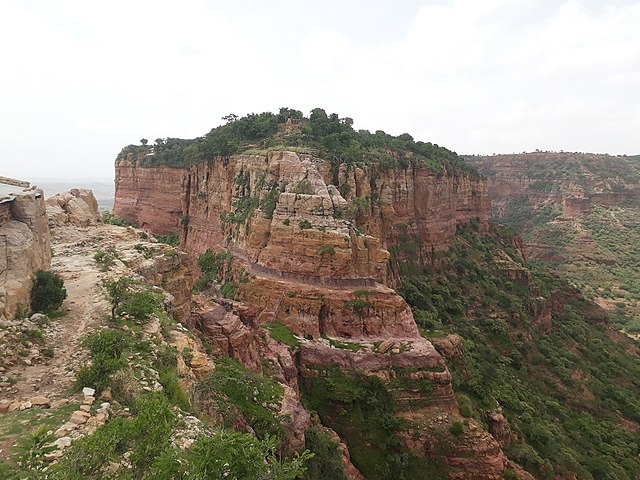The Adigrat Sandstone formation in north Ethiopia, in a wide array of reddish colours, comprises sandstones with coarse to fine grains, and locally conglomerates, silt- and claystones. Given the many lateritic palaeosols and locally fossil wood fragments, the formation is interpreted as a deposit in estuarine, lacustrine-deltaic or continental environments. The upper limit of Adigrat Sandstone is of Middle-Late Jurassic age whereas the lower boundary is Triassic. There are numerous rock-hewn churches in this formation.
Dabba Selama monastery in Dogu’a Tembien, established on a mesa in Adigrat Sandstone – one of the most inaccessible monasteries in the world
Rock sample of Adigrat Sandstone, collected at Kalazban
Debre Sema'it rock chuch
The “red caves” or Kayeh Be’ati in Adigrat Sandstone, at the border of Dogu’a and Kola Tembien
Kola Tembien is a woreda in Tigray Region, Ethiopia. It is named in part after the former province of Tembien. Part of the Mehakelegnaw Zone, Kola Tembien is bordered on the south by Abergele, on the west by the Tekezé River which separates it from the Semien Mi'irabawi Zone, on the north by the Wari River which separates it from Naeder Adet and Werie Lehe, on the east by Misraqawi (Eastern) Zone, and on the southeast by Degua Tembien. Towns in Kola Tembien include Guya and Werkamba. The town of Abiy Addi is surrounded by Kola Tembien.
Kola Tembien
The Tsaliet River (near Addeha), a tributary to Weri'i River
Kayeh Tehli as seen from Tsili ridge
Aeolian deposition near Addeha








